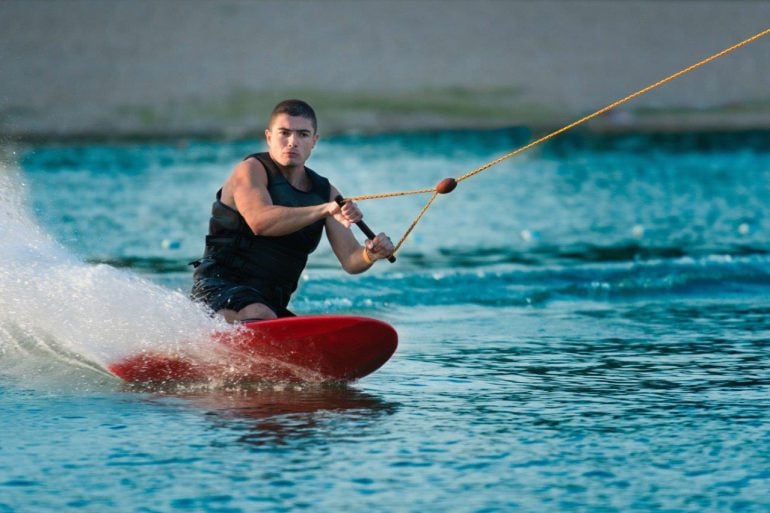Kneeboarding is a thrilling outdoor water sport that is not only tons of fun, but also accessible for people of all ages.
If you already enjoy surfing, water skiing, snowboarding or wakeboarding, (to name a few similar activities), then you’re guaranteed to have a blast on a knee board as well. For those who have never tried it, and for whom the thought of any water sport that requires a board may be a little intimidating, rest assured this is a great activity to get going with. This is due in large part to the fact that you’re down on your knees, so your center of gravity is lower, which makes achieving balance and getting up on the board easier. Being closer to the water as you learn also makes the spills you’re bound to take far less dramatic and cuts down on the time that you’re back up on your board and getting after it again!
The first thing you probably want to know is how this whole kneeboarding thing even works.
Let’s hit you with the basics to start. Kneeboarding involves riding a surf-style board (although smaller), on your knees, while being pulled behind a motorboat. You can kneeboard along the coastline in the ocean and you can also kneeboard in lakes, rivers, reservoirs and the like. Generally, kneeboarding is far more popular in the latter type of environment, as the water conditions in lakes and reservoirs are typically calmer and far more predictable. Kneeboarding on the ocean can also be especially difficult for novice riders who are still learning the craft.
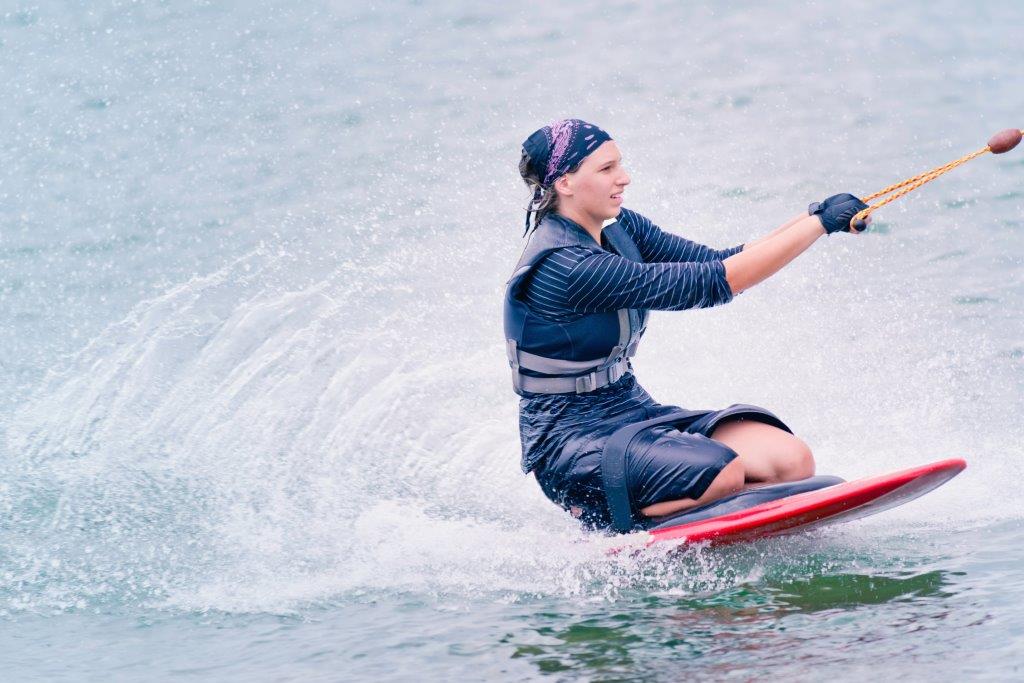
Your knees fit snugly into built-in knee pads on the board, and you hold onto a tow rope handle and line that is secured to the boat. Although the learning curve as compared to water skiing is much less steep, there are nonetheless some things the first-time rider needs to check off the list before launching into the water. Before we get into a quick explanation of proper technique for getting up onto the board (the most difficult aspect for a first-time rider), let’s take a look at some general tips and best practices that will help you become a successful kneeboarder before you even hit the water (no pun intended).
First, you don’t have to be in perfect condition or Olympic shape to have fun on a kneeboard.
You do, however, need to make sure you stretch out before you ride. People often assume that the knees bear the brunt of the beating on a kneeboard, but it’s much more so your neck, back, shoulders and arms that really feel it most. As such, you should take the opportunity to stretch, focusing in on these areas. Use the hamstrings to stretch out the middle portion of the back with bent-over toe touches.
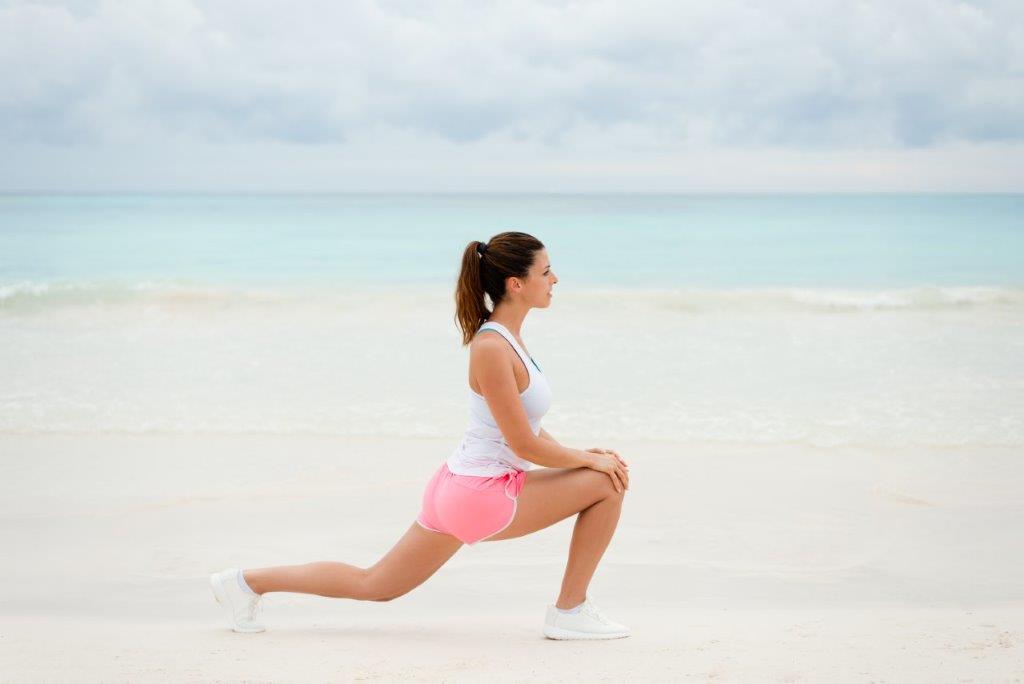
If you are enthusiastic about kneeboarding, (perhaps you’ve been out once and can’t wait to go again), you can look into other stretching/strengthening workouts and routines that will most certainly aid in your progression. Certain yoga and Pilates workouts can be great, as well as simple, consistent stretching and strength-building calisthenics.
In terms of gear, you’re going to want to select a board that is suitable for your skill level
Most people go out for the first time with friends or family, if they are not in a lesson. In either case, you will be guided and instructed in selecting the appropriate board for you. Broadly speaking, roto-molded boards, which are constructed of thick plastic, are preferable for young kids, mostly because they are strong, easier to ride and relatively inexpensive. Then there are compression-molded kneeboards, which are lighter, more responsive and generally better suited for freestyle tricks and jumping wakes. Adult novice riders will most likely be selecting from these kinds of boards, which are also relatively inexpensive. You can also often find deals on boards that include other accessories, including your straps, handle, hook and tow line. A final tip related to gear is that you may also want to look into getting a seat for your kneeboard. These little babies fit right beneath your backend and act as a nice shock absorber and an added element of stabilization as you get going.
Now for the fun part- getting up on your kneeboard so you can actually ride your kneeboard! Ok, so the first few attempts may not exactly be the most fun, but without them, you wouldn’t be able to become the world-busting kneeboarder that we just know you’re bound to become.
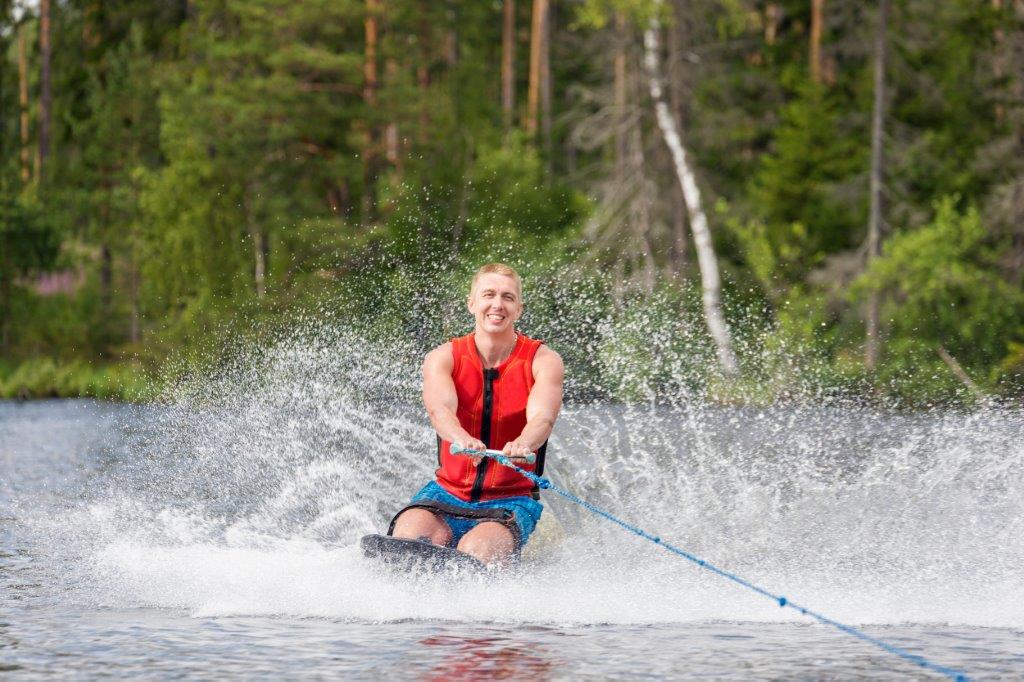
To begin, kneeboarding is similar to surfing, in that you lie on your board on your stomach, with your feet in the water behind you. Your tow rope handle will be securely fasted to the hook at the top of the kneeboard. The best position for your arms is to hold onto the top of the board with your hands and rest your elbows on the knee pads (this is while there is still slack in the rope). When you’re ready, you let the driver know they should slowly begin accelerating. Then, slide both knees (at the exact same time) up to the top of the board until they touch your elbows and slide into the knee pad holsters.
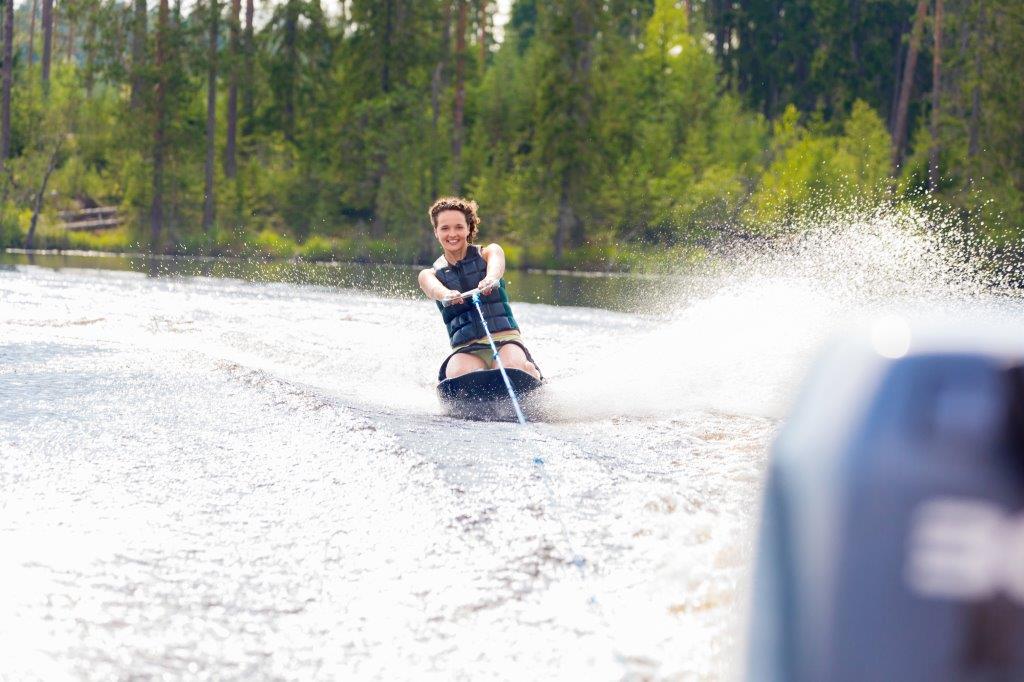
Your dominant hand should still be holding onto the end of the board, your other hand holding the handle of the rope, while your nose is over the front of the board. At this point, rock your weight backward onto your heels, straighten your back and stay upright. There is no rush to secure your strap. Take some time to get used to the pace of the boat and a sense for your own balance, then pull the Velcro strap across your knees. Take hold of the tow rope handle with both hands, knuckles facing upward, slight bend at the elbows, and you’re on your way. You can signal to the driver to speed up once you’re more comfortable in general.
Kneeboarding is one of the most popular tow sports for good reason.
You can enjoy it at just about any age and it doesn’t require the purchase of a lot of expensive equipment… that is assuming you know someone who can provide the boat! Check out our blog to learn more about kneeboarding, including some of the very best locations to enjoy it throughout the country.

